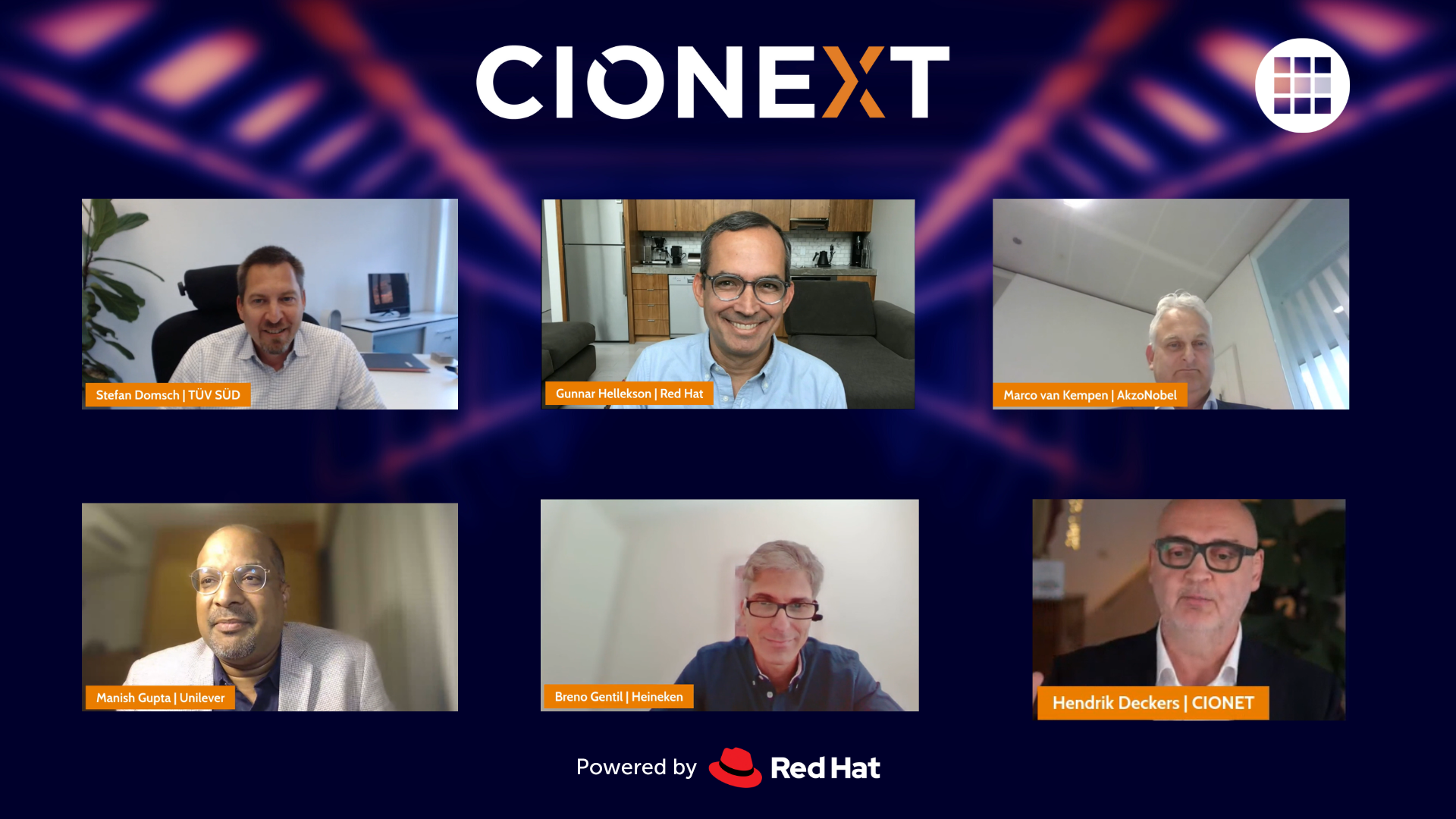
Many organisations today see their SAP as a foundation to advance their digital transformation. A well-architected ERP can provide companies not only with financial and business process visibility but can also enable a remote workforce or provide real-time analytics for data-based management.
Yet, to achieve digital transformation at scale, organisations need to modernise their ERP systems. According to a Red Hat sponsored survey conducted by IDC, for 53% of respondents, modernisation is there to help to consolidate the SAP application landscape streamlining the application portfolio, 42% want to create a better customer experience, and 37% want to drive operational (business and IT) efficiency.
Upgrading ERP is a valuable journey, but it can come with some challenges along the way. And these challenges are not only the inflation, disturbance to the commodity prices and supply chain or the current war for talent.
The sheer variety of software architectures that exist in the world, from mainframes to all kinds of heavily distributed containerised applications and things like ERPs, make it hard to capture it all and support it in a consistent way. And all the different consumption models that customers like Unilever or Heineken have available to them, make it for a software provider a challenge to be able to capture all of those different buying vehicles and all those different routes, said Gunnar Hellekson of Red Hat.

On June 15th, CIONET brought together 100s of digital leaders from global companies, who discussed the key steps that need to be taken to make their ERP transition successful. The conference, sponsored by Red Hat, was moderated by Hendrik Deckers and featured a panel of great speakers:
Conway's law and consolidation
Conway's law, mentioned during the conference by Gunnar Hellekson, is the rule that says that a system will reflect the structure of the organisation that built it. This is the rule that all companies represented at the CIONEXT conference have applied to upgrade their ERP systems. All of our speakers want to consolidate their ERPs, but each one does it in its own way to preserve the specifics of the organisation and enable it to function at its best.
For example, Unilever has just four ERP systems, all SAP, and they are surrounded by satellite systems that could be, but do not have to be SAP-origin. The company is also thinking of consolidating it. “It's about creating that layer, which kind of makes this business a little more immune to the changes that we keep making with the portfolio of businesses that we run and that hides the complexity of the underlying ERP till we eventually move to maybe SAP S/4HANA,” said Manish Gupta.
Heineken, in turn, has about 45 ERP systems across the globe and about 3,000 business applications. Out of these 3,000, less than 10% are used by more than 20 different countries. The Dutch brewing company is also consolidating its systems. The strategy is called three circles or three tiers. The first circle is the ERP – the digital core. It will be SAP HANA Cloud. As Breno Gentil said, it's the minimum set of major business processes that will be common across the countries in the world. In the second circle are modern cloud business applications, which will be different according to the business area they address. And the third one is called digital products: these are the areas where the company can start to differentiate even more.
Our businesses are different in different countries, so imposing the same thing for everyone doesn't necessarily make sense. And there's also a commercial aspect of this, because sometimes, if you put all your eggs in the same basket, you will completely lose your leverage commercially, said Breno Gentil.
Watch the Leadership Deep Dive interview with Breno Gentil:
AkzoNobel has been implementing a large ERP consolidation program for a few years. In 2015 the company had 51 ERP systems and currently, these have been reduced to just 24. “Out of these 24, four represent 95% of the business. And our ambition is to move to one ERP system,” said Marco van Kempen. AkzoNobel also has about 800 business applications next to its ERP systems, and this number has been reduced by 8 to 10% per annum in recent years.
TÜV SÜD, with its many ERP systems, is also aiming at consolidation, but a cautious one. “We realise that in this huge environment, it's not just the SAP system, but it's the whole ecosystem that has been built around it. So therefore, we cannot destabilise this environment,” said Stefan Domsch.
Applications’ BMI
So how to make a smart consolidation? How to find out which applications are the most functional for your business?
Application BMI (Body Mass Index) is Manish Gupta’s original concept, which works exactly like your body mass index and has already been applied to about 20% of Unilever's asset base.
A lot of our applications, including SAP, have attained more ‘calories in’ than ‘calories out’ and therefore, they have gotten some weight around the stomach. We need to shed that weight, whether it is a custom built code, whether it is through non standardisation. The index has an enumerator and a denominator. The enumerator is made up of everything that creates ‘calories in’, and the denominator is the number of users of that application, said Manish.
Unilever’s Vice President for Global Enterprise Platforms is also introducing the term “commonality index”, which reflects how common the applications are.
The CIONEXT speakers also shared their best way to integrate ERP, applications and digital products. According to Breno Gentil the most flexible way is to go towards API and microservices.
Efficiency, innovation, and data management
As Gunnar Hellekson of Red Hat noted, ERP standardisation effort is not just about efficiency. “There are dividends from that efficiency, which come in the form of innovation down at the regional level, and to the extent that you can actually share best practices across groups,” he said.
Watch the Leadership Deep Dive interview with Gunnar Hellekson:
Efficiency and innovation go hand in hand with good data management. Our speakers agreed that the enterprise data model, which is agnostic to the platform or the ERP, is the key to success. Therefore, if companies change their ERP and their business platforms, the data model should remain the same. It should also be governed by a particular person that leads data governance across the whole organisation.
Moving to the cloud?
Data management took us seamlessly to the topic of cloudification. The most important characteristic of a modern ERP system is that you can consume it from the cloud. According to the survey we casted during the CIONEXT, almost 37% of respondents are already using a cloud-based ERP, almost 18% are planning to do it in the next 6-12 months, and 46% do not have such plans in the near future.
Unilever has just moved one of its largest instances to a private cloud. Manish’s immediate tech steps are to move the company infrastructure to the cloud and probably eliminate the data centre.
Organisations still treat the cloud as a data centre that's outside their premise, and nothing can be farther from the truth. Cloud is a whole different way of working. It's not just hosting it somewhere, it's about DevOps. It's about bringing agility. It's about responsiveness, it's about integration, he said.
AkzoNobel and Heineken show similar approaches to cloudification. In turn, TÜV SÜD has not decided yet on where to go: cloud or on premise. “Every SAP is pushing you hard in the cloud direction, because they wanna have your money. But we will decide on it once we have the final architecture,” said Stefan Domsch.
Building on that, Breno Gentil said that you have to be very careful about how you store things in the cloud:
I will use the metaphor of the song 'Hotel California': you can check in at any time but you can never leave. If you use very specific cloud services you have to be very cautious because the costs of leaving can be very high. You will get everything that makes you come in but not necessarily to come out.
We would like to express our thanks to the CIONEXT speakers – their readiness to share their experience and expertise on the ERP modernisation played a vital role in making the event a great success!
WATCH the recording of the CIONEXT:
These Stories on CIONET International
No Comments Yet
Let us know what you think